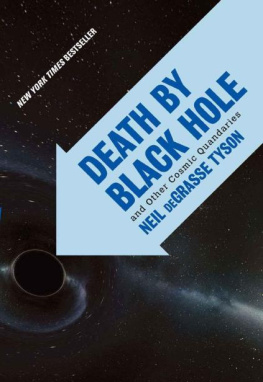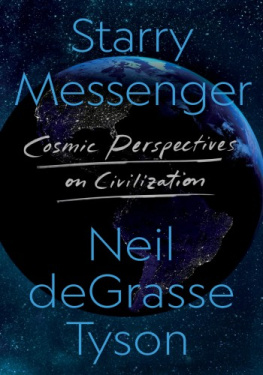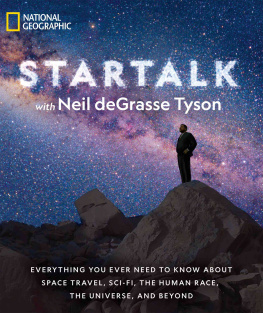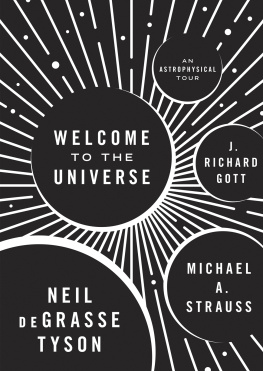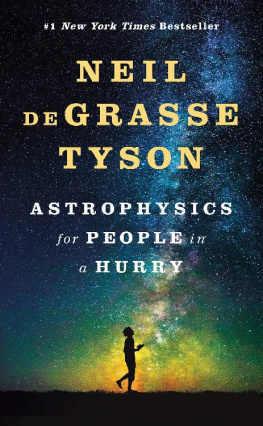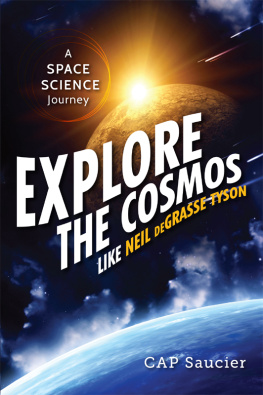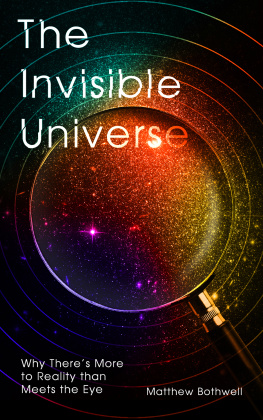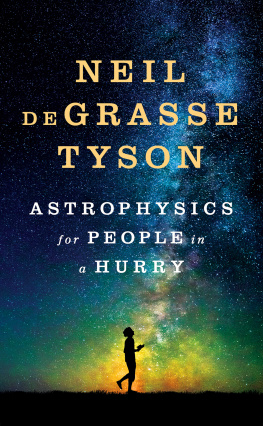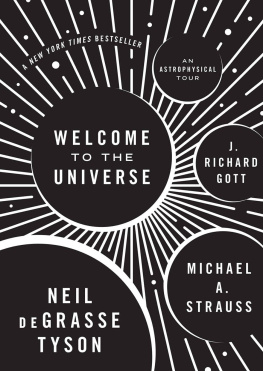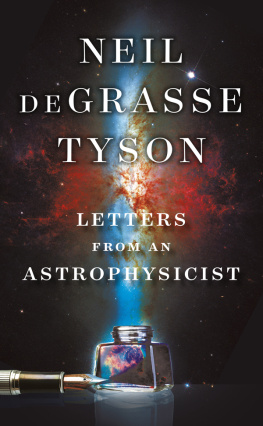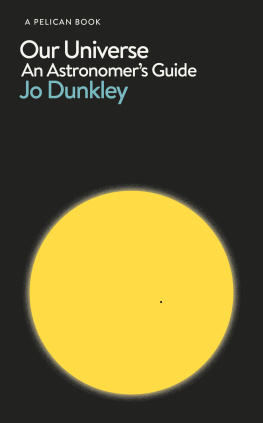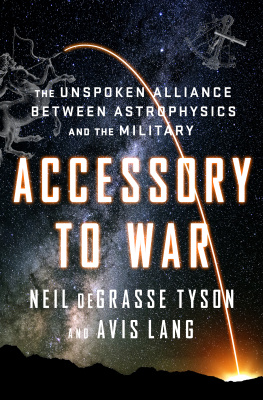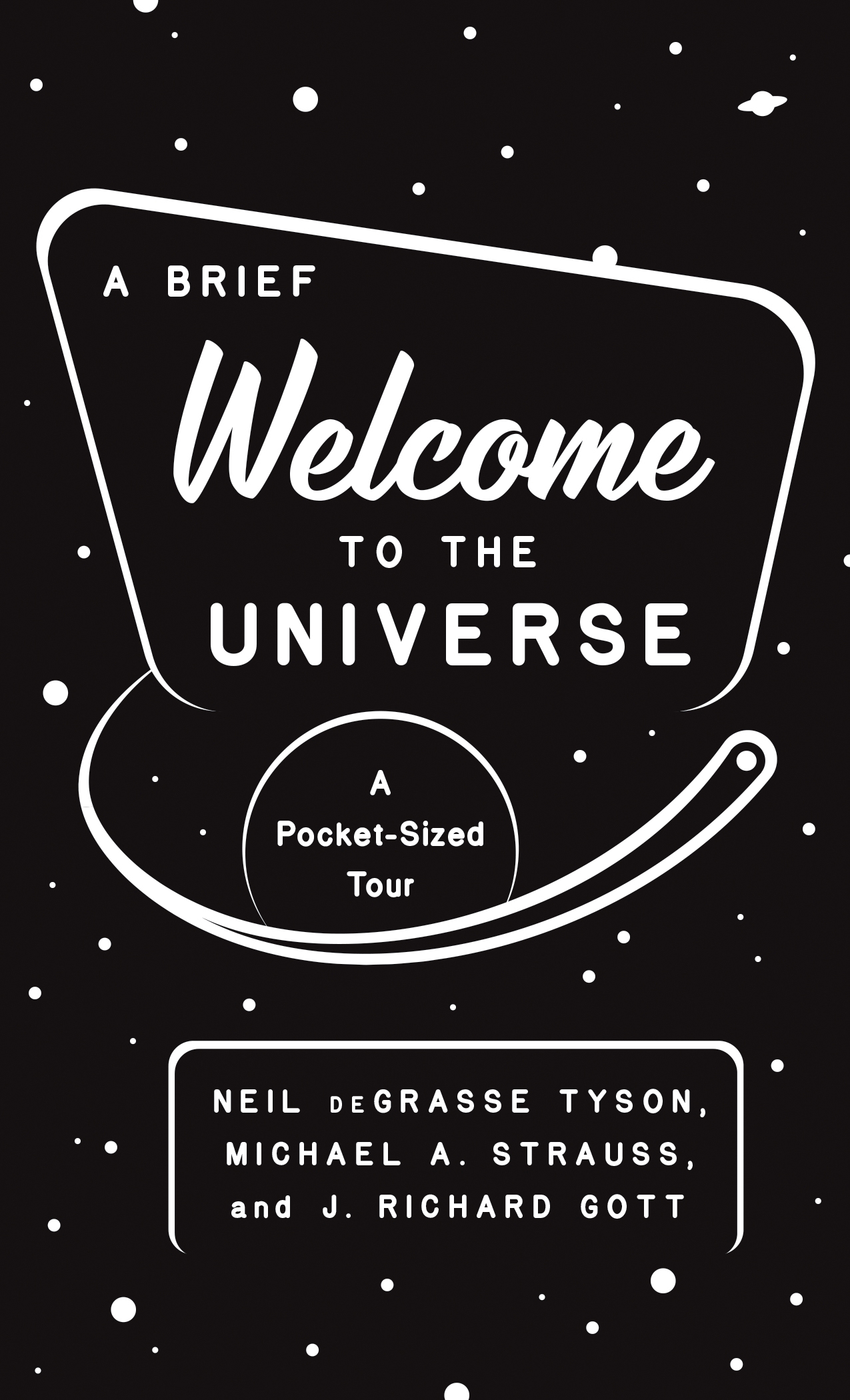A BRIEF WELCOME TO THE UNIVERSE
A BRIEF WELCOME TO THE UNIVERSE
A Pocket-Sized Tour
NEILGRASSE TYSON,
MICHAEL A. STRAUSS,
AND J. RICHARD GOTT
PRINCETON UNIVERSITY PRESS
PRINCETON AND OXFORD
Copyright 2021 by Neil deGrasse Tyson, Michael A. Strauss, and J. Richard Gott
Princeton University Press is committed to the protection of copyright and the intellectual property our authors entrust to us. Copyright promotes the progress and integrity of knowledge. Thank you for supporting free speech and the global exchange of ideas by purchasing an authorized edition of this book. If you wish to reproduce or distribute any part of it in any form, please obtain permission.
Requests for permission to reproduce material from this work should be sent to
Published by Princeton University Press
41 William Street, Princeton, New Jersey 08540
6 Oxford Street, Woodstock, Oxfordshire OX20 1TR
press.princeton.edu
All Rights Reserved
Library of Congress Cataloging-in-Publication Data
Names: Tyson, Neil deGrasse, author. | Strauss, Michael Abram, author. | Gott, J. Richard, author.
Title: A brief welcome to the universe : a pocket-sized tour / Neil deGrasse Tyson, Michael A. Strauss, and J. Richard Gott.
Description: Princeton, New Jersey : Princeton University Press, [2021] | Includes index.
Identifiers: LCCN 2021018408 (print) | LCCN 2021018409 (ebook) | ISBN 9780691219943 (paperback) | ISBN 9780691223612 (ebook)
eISBN 9780691223612 (ebook)
Subjects: LCSH: CosmologyPopular works. | AstrophysicsPopular works. | BISAC: SCIENCE / Physics / Astrophysics | SCIENCE / Physics / General
Classification: LCC QB982 .T963 2021 (print) | LCC QB982 (ebook) | DDC 523.1dc23
LC record available at https://lccn.loc.gov/2021018408
LC ebook record available at https://lccn.loc.gov/2021018409
Version 1.0
British Library Cataloging-in-Publication Data is available
Editorial: Ingrid Gnerlich, Mara Garca, Whitney Rauenhorst
Production Editorial: Mark Bellis
Cover Design: Karl Spurzem
Production: Jacqueline Poirier
Publicity: Sara Henning-Stout and Kate Farquhar-Thomson
Copyeditor: Kathleen Kageff
CONTENTS
- vii
- NEILGRASSE TYSON
- NEILGRASSE TYSON
- MICHAEL A. STRAUSS AND NEILGRASSE TYSON
- NEILGRASSE TYSON
- MICHAEL A. STRAUSS
- MICHAEL A. STRAUSS
- J. RICHARD GOTT
- J. RICHARD GOTT
A NOTE TO THE READER
A Brief Welcome to the Universe: A Pocket-Sized Tour is the spirit essence of our larger collaboration Welcome to the Universe: An Astrophysical Tour. If that book was an all-you-can-eat cosmic banquet, this book offers appetizer portions, intended to stimulate your appetite for more.
A BRIEF WELCOME TO THE UNIVERSE
CHAPTER 1
SIZE AND SCALE OF THE UNIVERSE
Neil deGrasse Tyson
We begin with the solar system. Ascend to the stars. Then reach for the galaxy, the universe, and beyond.
The universe. Its bigger than you think. Its hotter than you think. It is denser than you think. Its more rarified than you think. Everything you think about the universe is less exotic than it actually is. Lets get some numerical machinery together before we begin. Start with the number 1. Youve seen this number before. There are no zeros in it. If we wrote this in exponential notation, it is ten to the zero power, 100. The number 1 has no zeros to the right of that 1, as indicated by the zero exponent. Moving onward, the number 10 can be written as 10 to the first power, 101. Lets go to a thousand103. Whats the metric prefix for a thousand? Kilo-kilograma thousand grams; kilometera thousand meters. Lets go up another three zeros, to a million, 106, whose prefix is mega-. Maybe this is the highest they had learned how to count at the time they invented the megaphone; perhaps if they had known about a billion, by appending three more zeroes, giving 109, they would have called them gigaphones.
Do you know how big a billion is? What kinds of things come in billions?
Currently we are approaching 8 billion people in the world.
How about Jeff Bezos, the founder of Amazon.com? Whats his wealth up to? More than 100 billion dollars. Where have you seen 100 billion? Well, McDonalds: Over 99 Billion Served. Thats the biggest number you ever see in the street. McDonalds never displayed 100 billion, because they allocated only two numerical slots for their burger count, and so, they just stopped at 99 billion. After that, they pulled a Carl Sagan on us and now say, billions and billions served.
Take 100 billion hamburgers, and lay them end to end. Start at New York City, and go west. Will you get to Chicago? Of course. Will you get to California? Yes. Find some way to float them. This calculation uses the diameter of the bun (4 inches), so its all about the bun. Now float them across the ocean, along a great circle route, and you will cross the Pacific, pass Australia, the Indian Ocean, Africa, and across the Atlantic Ocean, finally arriving back in New York City. Thats a lot of hamburgers. But you have some left over after you have circled Earths circumference. So, you make the trip all over again, 215 more times. Afterward, you still have some left. Youre bored circumnavigating Earth, so you stack what remains. How high do you go? Youll go to the Moon, and back, with stacked hamburgers (each 2 inches tall) after youve already been around the world 216 times. Only then will you have used your 100 billion hamburgers. Thats why cows are scared of McDonalds. By comparison, the Milky Way galaxy has about 300 billion stars. Perhaps McDonalds is gearing up for the cosmos.
When you are 31 years, 7 months, 9 hours, 4 minutes, and 20 seconds old, youve lived your billionth second. Im just geeky enough to have celebrated that moment in my life with a fast sip of champagne.
Lets keep going. Whats the next step up? A trillion: 1012. We have a metric prefix for that: tera-. You cant count to a trillion. If you counted one number every second, it would take you 1,000 times 31 years31,000 years, which is why we dont recommend doing this, even at home. A trillion seconds ago, cave dwellerstroglodyteswere drawing pictures on their living-room walls.
At New York Citys Rose Center of Earth and Space, a spiral ramp timeline of the universe begins at the Big Bang and displays 13.8 billion years. Uncurled, its the length of a football field. Every step you take spans 50 million years. You get to the end of the ramp, and you ask, where are we? Where is the history of our human species? The entire period of time, from a trillion seconds ago to today, from graffiti-prone cave dwellers until now, occupies only the thickness of a single strand of human hair, which we have mounted at the end of that timeline. You think we live long lives; you think civilizations last a long time? No. Not relative to the cosmos itself.
Whats next? 1015. Thats a quadrillion, with the metric prefix peta-. Between 1 and 10 quadrillion ants live on (and in) Earth, according to Harvard biologist E. O. Wilson.
Then comes 1018, a quintillion, with metric prefix exa-. Thats the estimated number of grains of sand on ten large beaches.


